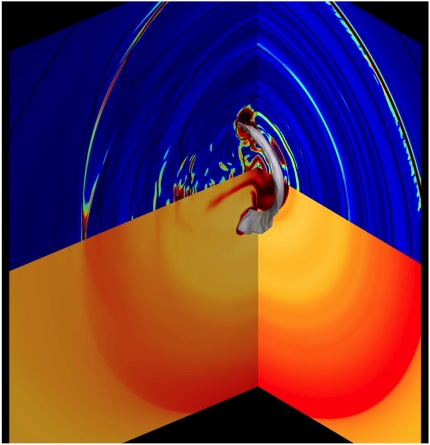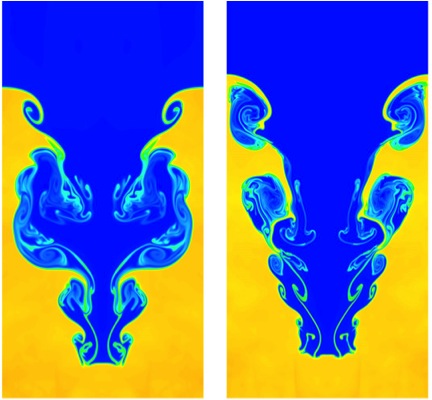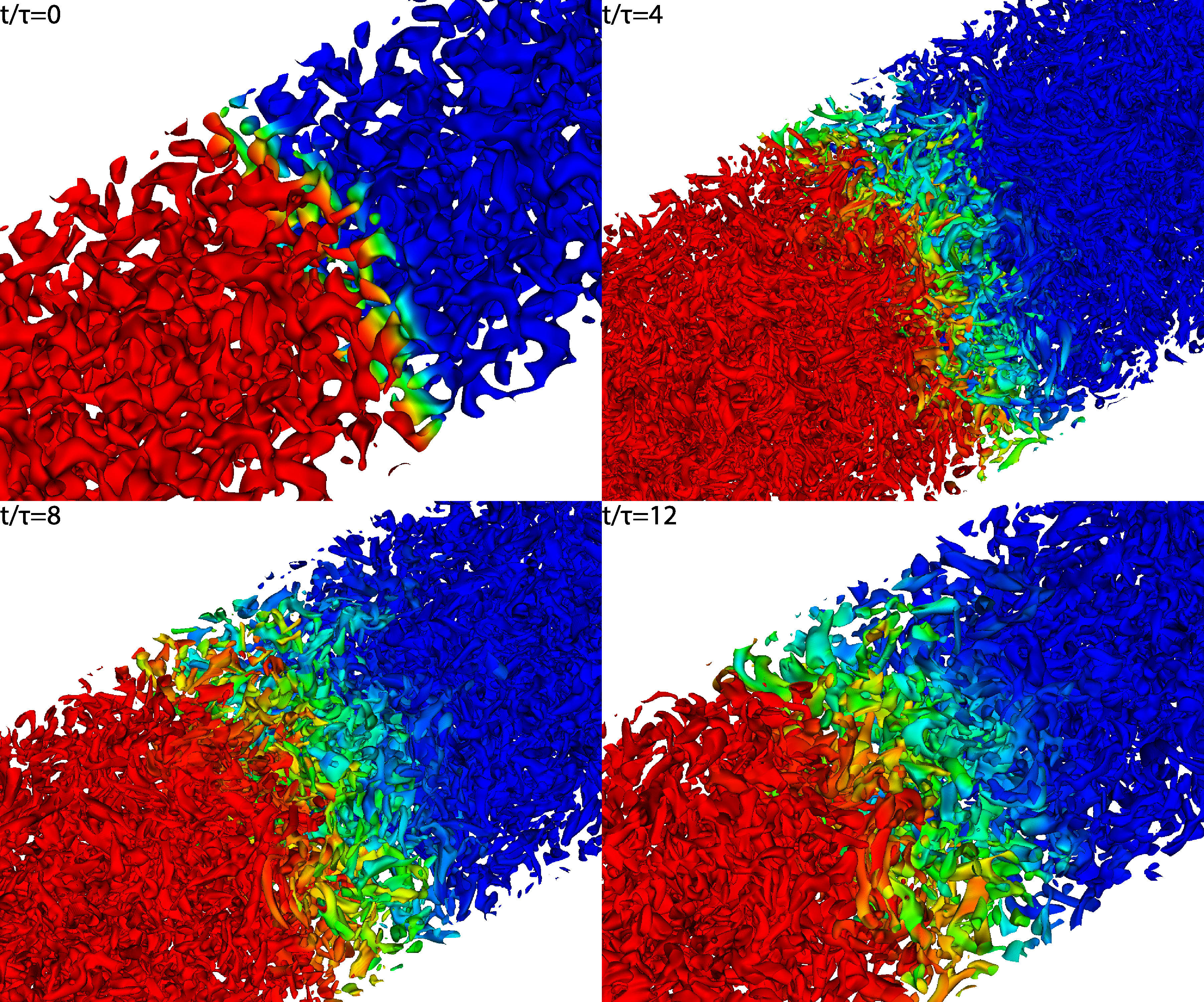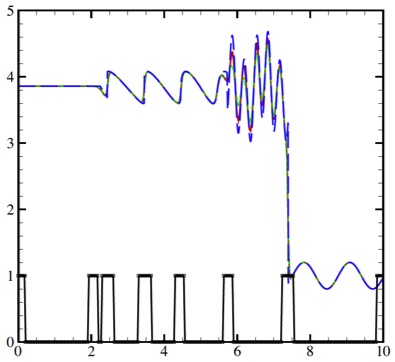Our research draws from applied math, numerical/physical modeling and high-performance computing to develop novel techniques to simulate and model flow phenomena. We seek to uncover the basic physics underlying complex multiscale and multiphysics flows, in particular inertially dominated interfacial flows, with broad interests in:
Direct simulations (gas/liquid compressible Navier-Stokes) and simple models (Rayleigh-Plesset) are used to understand bubble dynamics and the damage thereby produced, droplet dynamics, and plasmas.
Target applications include health (ultrasound, traumatic brain injury, wound healing), naval hydrodynamics (cavitation erosion), hypersonics, energy sciences (nuclear energy, Spallation Neutron Source).
Using direct simulations of the mass, momentum, and energy equations, we investigate the propagation of shock waves in complext (heterogeneous, non-newtonian) media, including interfaces separating different materials, and radiation-dominated flows.
Target applications include energy sciences (high-energy-density physics, inertial confinement fusion), hypersonics.
We use direct numerical simulation (DNS) and large-eddy simulation (LES) to investigate hydrodynamic instabilities and turbulent flows, including compressible turbulence, vortex rings, wall-bounded turbulence and multi-material mixing.
Target applications include energy sciences (high-energy-density physics), aeronautics (aerodynamics, wall-bounded flows), astrophysics.
We develop stable, accurate and efficient numerical methods to conduct high-fidelity simulations of complex flows, including shocks, interfaces, turbulence, radiation, and viscoelasticity.
Our focus is on high-order accurate finite difference, finite volume, and discontinuous finite element methods. We are pursuing novel paradigms for high-performance computing (including variable-precision computing) and exploring optimal experimental design.
Current sponsored projects
- Center for Prediction, Reasoning & Intelligence for Multiphysics Exploration (C-PRIME)
- Algorithm/Software/Hardware Co-design for High Energy Density applications
- Center for High-Energy-Density Laboratory Astrophysics (CHEDAR)
- A multiscale, physics-based approach for blast and blunt traumatic brain injury prediction and prevention
Past sponsored projects
- A theoretical/computational framework to measure SiO2 and MgO viscosity at high pressure
- Flow characterization in novel needle designs to enhance the delivery of high-viscosity large-volume therapeutics
- Hypersonics-relevant hydrodynamics and radiation-hydrodynamics
- Collaborative research in hydrodynamics and radiation hydrodynamics at high energy density
- High-resolution simulations of bubble collapse in a channel with shear flow
- Role of unsteady cloud shedding on cavitation intensity
- Cavitation-induced pressure waves in catheter devices
- Vorticity and turbulent dynamics of accelerated interfaces
- Validation of pressure relaxation coefficients in the seven-equation model
- Cavitation erosion in the Spallation Neutron Source (Proton Power Upgrade)
- Ultrasound-induced pulmonary hemorrhage during diagnostic examination of the lung
- The study of radiative effects on turbulent plasmas
- An integrated experimental-computational approach for developing a multiscale theory for cavitation in soft complex materials
- High energy density physics (HEDP) studies using high power lasers
- Shock waves and cavitation in human tissue
- Dosimetry of cavitation microlesions in microbubble enhanced medical ultrasound
- Equipment for advanced simulations and experiments of bubble dynamics
- Vehicle drag reduction through flow control
- Understanding and predicting cavitation erosion using high-fidelity numerical simulations
- Assessment and mitigation of cavitation damage in the Spallation Neutron Source
- Center for radiative shock hydrodynamics
- ...
We thank our current and past sponsors for their support: Department of Energy (DOE), National Nuclear Security Administration (NNSA), Office of Naval Research (ONR), National Institutes of Health (NIH), National Science Foundation (NSF), Lawrence Livermore National Laboratory (LLNL), Los Alamos National Laboratory (LANL), the Laboratory for Laser Energetics (LLE), Oak Ridge National Laboratory (ORNL), Oak Ridge Associated Universities (ORAU), Ford Motor Company, Boston Scientific Corporation, Merck, Kadant, and the University of Michigan, as well as ALCF, OLCF, Blue Waters, and XSEDE/ACCESS computing.



